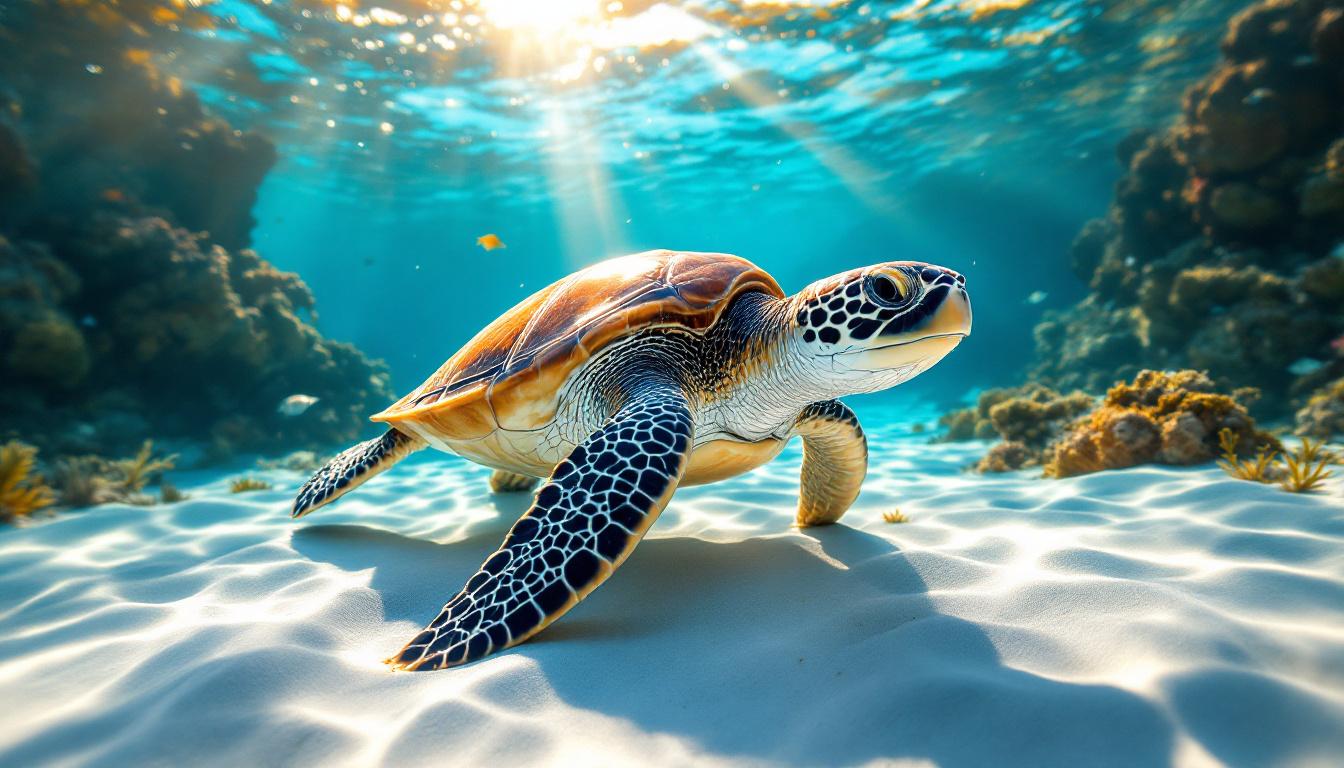Thirty-five kilometers off Nicaragua’s Caribbean coast, a secret archipelago guards the most important hawksbill turtle nesting sanctuary in the western Caribbean. Local fishing guides from Pearl Lagoon whisper about these 18 pristine cays with reverence, knowing they protect something far more precious than their white sand beaches.
The Pearl Cays aren’t just another tropical paradise. They’re the only place in Nicaragua where critically endangered hawksbill turtles choose to nest in significant numbers, creating over 35,000 hatchlings annually in a conservation miracle that locals fiercely protect.
While tourists flock to Costa Rica’s crowded Manuel Antonio or Honduras’ commercialized Bay Islands, these 18 jewel-like cays remain virtually untouched, accessible only by boat and guarded by Caribbean coast communities who understand their irreplaceable ecological role.
The sanctuary locals call their greatest treasure
Where 35,000 baby turtles begin their ocean journey
From May through November, Wild Cane Cay becomes the epicenter of one of nature’s most remarkable spectacles. Female hawksbills, some over 100 years old, return to these exact beaches where they were born, hauling themselves onto moonlit shores to dig nests in pristine coral sand. Local guide Miguel Hernández from Pearl Lagoon explains that his grandfather witnessed the same turtles returning for decades, creating an unbroken chain of life spanning generations.
The wildlife refuge that changed everything
In 2010, the Wildlife Conservation Society partnered with local communities to establish the Pearl Cays Wildlife Refuge, transforming these islands from vulnerable nesting grounds into protected sanctuary. The results speak volumes: turtle populations have increased dramatically, with 11 of the 18 cays now hosting active nests, compared to just scattered individual turtles decades ago.
The boat journey that reveals paradise
Why this remote access protects what matters most
The 90-minute boat ride from Pearl Lagoon serves as nature’s own filtering system. Only $25 per person separates you from pristine coral reefs where hawksbills forage among elkhorn corals, but the journey requires commitment that mass tourism can’t provide. Captain Rosa María, whose Miskito family has navigated these waters for centuries, knows exactly which cays remain undisturbed during nesting season.
The turquoise lagoons where conservation meets paradise
Between the cays, crystal-clear lagoons provide snorkeling encounters with the very turtles you’re helping protect. Unlike crowded Caribbean destinations where turtle sightings are rare and rushed, here you’ll often swim alongside juvenile hawksbills in water so clear you can see their distinctive shell patterns from 20 feet away.
The authentic experience that transforms travelers
How local guides share their conservation knowledge
Every visit includes education from Afro-Caribbean and Miskito guides whose families have protected these waters for generations. They’ll teach you to identify hawksbill tracks in the sand, explain the precise temperature requirements for turtle egg incubation, and share traditional fishing methods that coexist with conservation efforts rather than competing against them.
The camping experience on uninhabited islands
Several cays offer overnight camping opportunities where you’ll fall asleep to waves lapping coral shores and wake to untouched sunrise beaches. This isn’t glamping—it’s authentic island immersion where your presence directly supports conservation through modest fees paid to local communities managing the refuge.
The respectful way to witness turtle magic
Why timing and guides matter for ethical encounters
Turtle watching requires strict protocols that local guides enforce religiously. Red lights only, no flash photography, and maintaining 15-foot distances ensure nesting females aren’t disturbed during their vulnerable egg-laying process. These aren’t tourist restrictions—they’re conservation necessities that determine whether future generations will experience this miracle.
The seasonal rhythms that govern island life
Peak nesting occurs during August’s new moons, when darkness provides optimal conditions for female turtles to approach beaches undetected. Local weather patterns mean calmer seas and better boat access, while the late-season timing allows you to witness both nesting adults and emerging hatchlings on the same trip.
The Pearl Cays offer something no resort can replicate: the chance to witness endangered species recovery while supporting the communities whose protection makes it possible. This isn’t just travel—it’s participation in one of conservation’s greatest success stories.
Book your boat transfer through Pearl Lagoon’s community tourism office and prepare for an experience that will fundamentally change how you understand the relationship between authentic travel and wildlife protection in Central America’s hidden corners.
Planning your turtle sanctuary adventure
What’s the best time to visit the Pearl Cays for turtle nesting?
Peak hawksbill nesting occurs from May through November, with August and September offering the highest activity during new moon phases. These months provide optimal weather conditions and the greatest chance of witnessing both nesting and hatching events.
How do I arrange respectful turtle watching tours?
Contact Pearl Lagoon’s community tourism office to book boats with certified local guides who understand conservation protocols. Tours cost approximately $25 per person and include education about turtle behavior and habitat protection.
Can I camp overnight on the Pearl Cays?
Several uninhabited cays permit overnight camping with advance permission from the Wildlife Conservation Society and local community managers. Camping fees support conservation efforts and require strict leave-no-trace practices.
What makes these turtle nesting sites unique in Nicaragua?
The Pearl Cays host Nicaragua’s largest hawksbill nesting population, producing over 35,000 hatchlings annually. The combination of pristine coral sand beaches and community-protected status creates ideal nesting conditions unavailable elsewhere along Nicaragua’s Caribbean coast.
How do I support conservation during my visit?
Choose community-managed tours that employ local guides, respect seasonal restrictions during peak nesting periods, and contribute directly to turtle monitoring programs through accommodation and tour fees that fund ongoing protection efforts.
